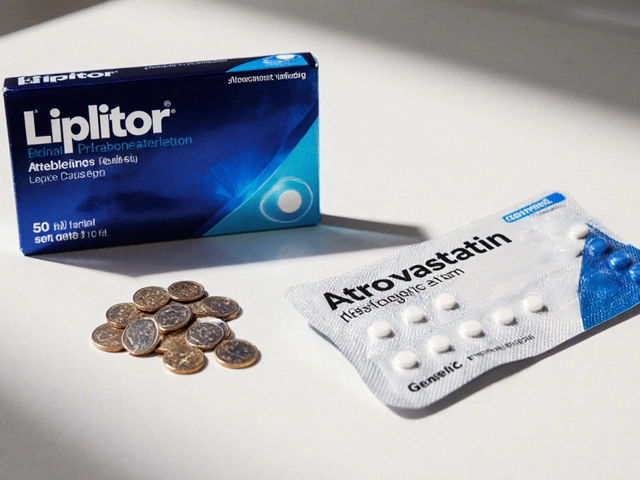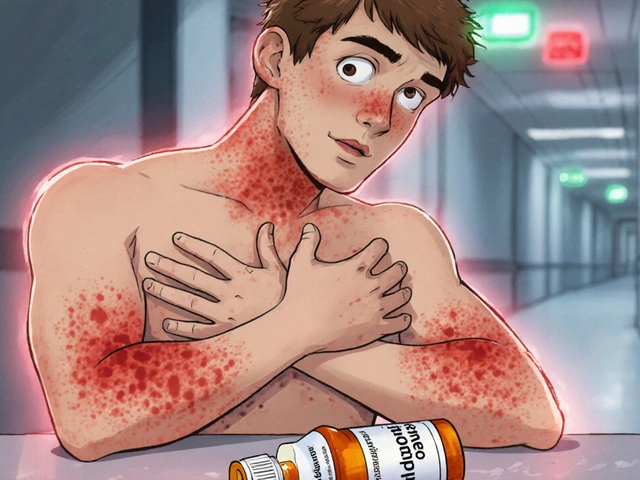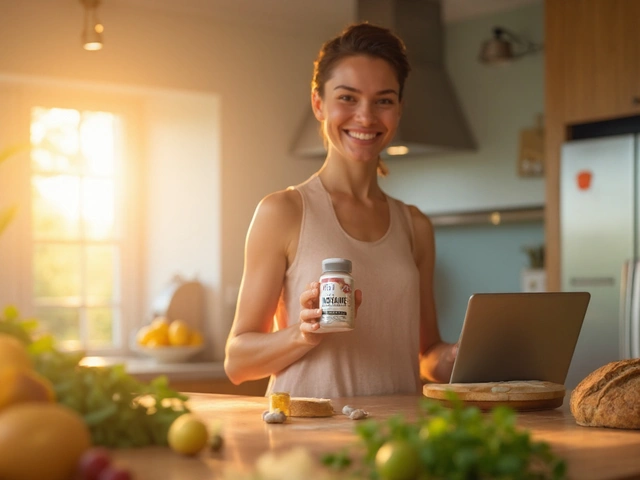When a blockbuster drug’s patent runs out, generics should flood the market-prices drop, patients save money, and healthcare systems breathe easier. But that’s not always what happens. Instead, companies quietly file new patents for tiny changes: a slightly different pill shape, a new time-release formula, or a combo with another drug that’s been around for decades. These aren’t breakthroughs. They’re legal tricks. And they’re called evergreening.
What Evergreening Really Means
Evergreening isn’t innovation. It’s extension. It’s when a drug company takes a medicine that’s about to lose patent protection and makes a minor tweak-something that doesn’t improve how well it works, but lets them file a new patent. This delays generic versions from hitting shelves for years, sometimes decades. The original 20-year patent clock doesn’t reset. Instead, companies stack new patents on top of the old one, creating a legal fence around the drug.Take AstraZeneca’s Prilosec, a heartburn drug. When its patent neared expiration, the company launched Nexium-a drug with a single atom changed. Nexium wasn’t more effective. It wasn’t safer. But it came with a new patent. Patients were told Nexium was “the next generation.” The price stayed high. Generics were blocked. In the end, AstraZeneca extended patent control on six drugs by more than 90 years combined.
How It’s Done: The Playbook
There’s a standard set of moves pharmaceutical companies use to keep generics out. These aren’t secrets-they’re in patent filings and court records. Here’s how they work:- New formulations: Changing how the drug is released-slow-release, chewable, liquid instead of pill. Even if the active ingredient is identical.
- Combination products: Pairing the old drug with another common ingredient and patenting the combo. This is common in diabetes and blood pressure meds.
- Method-of-use patents: Patenting a new condition the drug can treat-even if it’s the same molecule. For example, a drug approved for arthritis gets a new patent for treating psoriasis.
- Pediatric extensions: Running small studies on children to get an extra six months of exclusivity. Often, the drug works the same way in kids as adults.
- Product hopping: Pulling the original drug off the market and pushing patients to the “new” version. If the old version isn’t available, generics can’t be substituted.
- Patent thickets: Filing dozens, even hundreds, of patents on one drug. AbbVie filed 247 patents for Humira, a biologic used for autoimmune diseases. Even if one patent is invalidated, ten others remain.
These aren’t accidental. Companies hire teams of patent lawyers and chemists whose sole job is to find loopholes five to seven years before a patent expires. They don’t need to invent anything new. They just need to tweak enough to satisfy patent examiners-who aren’t doctors, and often don’t know if the change matters clinically.
The Cost to Patients and Systems
Generic drugs cut prices by 80% to 85% within a year of launch. That’s not theory-it’s fact. When Humira’s patents finally start expiring in 2023, analysts expect its price to drop from over $2,000 per injection to under $300. But thanks to evergreening, that moment was delayed for over a decade.Humira alone generated $40 million in daily revenue at its peak. That money didn’t come from research. It came from blocking competition. Patients with rheumatoid arthritis, Crohn’s disease, or psoriasis were forced to pay thousands a month. Many skipped doses. Some went without. In the U.S., where drug prices are highest, this isn’t just a business tactic-it’s a public health issue.
And it’s not just Humira. AstraZeneca’s diabetes drug, Onglyza, and GERD drug, Nexium, followed the same script. The result? Millions of people paying premium prices for drugs that could have been cheap generics years earlier.

Why Regulators Struggle to Stop It
The U.S. system was designed to balance innovation and access. The 1984 Hatch-Waxman Act let generics enter faster by letting them rely on the original drug’s safety data. But it didn’t close the door on patent stacking. The patent office approves applications based on legal novelty, not medical value. A new pill coating? Patentable. A drug that works better? Not required.The FDA can’t block a patent. It only approves whether a drug is safe and effective. So even if a new version adds nothing clinically, as long as the paperwork checks out, the FDA approves it. Then the generic makers face a wall of patents. Challenging one patent costs $2 million. Challenging 247? That’s a bankrupting gamble.
Europe and Canada are stricter. The European Medicines Agency now requires proof of “significant clinical benefit” before granting extra exclusivity. The U.S. still doesn’t. That’s why 78% of new drug patents in the U.S. are for existing drugs, not new ones.
Is There Any Legitimate Use?
Some argue evergreening encourages innovation. The logic: if companies know they can extend profits, they’ll invest more in R&D. But the numbers don’t support it. Developing a new drug costs $2.6 billion and takes 10-15 years. Evergreening costs a fraction of that-sometimes under $10 million-and delivers the same profits.True innovation doesn’t need patent stacking. It needs funding for new molecular targets, better delivery systems, or cures for rare diseases. Evergreening doesn’t fund that. It funds marketing campaigns, legal teams, and shareholder dividends.
There’s one exception: orphan drugs and pediatric formulations. These can be legitimate. A drug repurposed for children with a rare disease might need new trials. But those cases are rare. Most evergreening targets blockbuster drugs used by millions.

What’s Changing?
Pressure is building. In 2022, the U.S. Federal Trade Commission sued AbbVie over Humira’s patent strategy, calling it an illegal monopoly. The Inflation Reduction Act of 2022 lets Medicare negotiate prices for high-cost drugs-something that could reduce the profit motive behind evergreening. The World Health Organization has labeled the practice a barrier to global health equity.Some states in the U.S. are now tracking patent filings and publicizing “patent thicket” drugs. Generic manufacturers are teaming up to challenge clusters of patents in bulk. And courts are starting to invalidate obvious patents-like one for a pill with a “novel” color.
But the biggest shift might be cultural. Patients, doctors, and insurers are starting to ask: Why is this drug still expensive? Why isn’t there a generic? Why does this company keep filing patents on the same medicine?
What You Can Do
If you’re on a brand-name drug that’s been around for years, ask your pharmacist: Is there a generic? If not, why? Ask your doctor: Was this drug chosen because it’s better-or just because it’s still under patent?Advocacy groups like Public Citizen and Patients for Affordable Drugs track evergreening cases. You can join them. Contact your representatives. Support legislation that requires proof of clinical improvement before granting new exclusivity.
Every time a patent is invalidated, a generic enters, and a drug drops in price, someone’s life gets easier. That’s not just economics. It’s healthcare.
Is evergreening legal?
Yes, in most cases. Evergreening exploits legal loopholes in patent law, not criminal ones. Patent offices approve new patents based on technical novelty, not medical value. So even if a drug change is trivial-like switching from a tablet to a capsule-it can still be patented. That’s why it’s controversial, not illegal.
How long can evergreening delay generics?
It can delay generics by 10 to 20 years-or more. AbbVie’s Humira was originally set to face generic competition in 2016. Thanks to 247 patents, the first generics didn’t arrive until 2023. AstraZeneca extended patent life on some drugs by over 90 years combined. Each new patent adds months or years, layered like bricks around the original drug.
Do evergreened drugs work better than generics?
Almost never. Studies consistently show that modified versions-like Nexium vs. Prilosec or new-release versions of metformin-deliver the same clinical results as the original. The changes are often cosmetic or logistical. Patients don’t get better outcomes. They just pay more.
Why don’t generic companies just challenge the patents?
It’s too expensive and risky. Challenging one patent costs $1-2 million. Challenging 50 or 100? That could cost $50 million or more. Most generic makers don’t have that kind of capital. Even if they win, the legal battle can take years. By then, the brand company has already made billions. The system is designed to make it easier to pay than to fight.
Are there any countries that stop evergreening?
Yes. The European Union, Canada, Australia, and India have stricter rules. The EMA requires proof of “significant clinical benefit” before granting extra exclusivity. India’s patent law explicitly bars “evergreening” under Section 3(d), which says minor modifications without enhanced efficacy aren’t patentable. That’s why India is a major supplier of low-cost generics globally.
What’s the future of evergreening?
It’s evolving, not disappearing. Companies are shifting from small-molecule drugs to biologics-complex proteins that are harder to copy. They’re also using pharmacogenomics: patenting genetic tests that predict who responds to a drug, creating a barrier even after the drug itself is generic. But with Medicare price negotiation and growing public outrage, the tide may be turning. The next decade will show whether the system can be reformed-or if evergreening will keep running unchecked.






Rachael Gallagher
November 25, 2025 AT 02:49Adam Hainsfurther
November 25, 2025 AT 21:21steven patiño palacio
November 27, 2025 AT 13:55Akash Chopda
November 29, 2025 AT 08:40Sam Jepsen
November 30, 2025 AT 19:02Neoma Geoghegan
December 2, 2025 AT 17:44Nikki C
December 2, 2025 AT 20:36Alex Dubrovin
December 3, 2025 AT 00:44Natashia Luu
December 4, 2025 AT 19:47akhilesh jha
December 5, 2025 AT 22:45Jeff Hicken
December 7, 2025 AT 05:34Douglas cardoza
December 8, 2025 AT 22:26stephanie Hill
December 9, 2025 AT 20:15Yvonne Franklin
December 11, 2025 AT 09:56